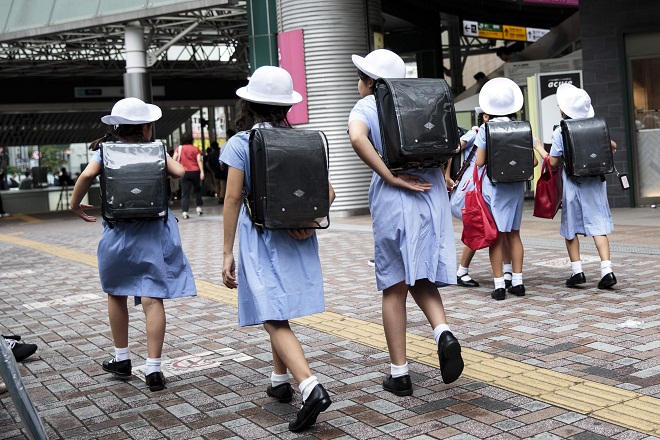Japan’s stance on territorial issues highlighted in new textbooks
March 27, 2019
Tokyo--All of six new social studies textbooks for fifth- or sixth-graders at elementary schools in Japan clearly explain the country's stance on its territories claimed by other countries, according to the results of the education ministry's screenings that were unveiled Tuesday.
The Sea of Japan islands of Takeshima, the Senkaku Islands in the East China Sea and four Russian-held northwestern Pacific islands, collectively called "Hoppo Ryodo," or Northern Territories, in Japan, are described as part of the country's inherent territories in all of the textbooks, to be used from the fiscal year starting in April 2020.
During the screening process, a panel of experts gave opinions on some textbook descriptions, saying students might misunderstand Japan's stance on Takeshima and the Senkakus, leading to modifications aimed at making descriptions related to the country's stance clearer.
In Japan, the panel advising the education minister screens textbooks compiled by private-sector publishers, based on teaching guidelines created by the ministry. Textbooks need to be approved by the panel before being used.
For the first time ever, the ministry's newest guidelines call for all of the island groups to be taught as Japan's inherent territories in social studies for fifth-graders.
The six textbooks describe Takeshima in Shimane Prefecture, western Japan, the Senkakus in the southernmost prefecture of Okinawa and Hoppo Ryodo in the northernmost prefecture of
Hokkaido as traditional Japanese territories and mention relationships with other countries over the islands.
Tokyo Shoseki Co.'s textbook for fifth-graders initially said that although Takeshima is Japan's inherent territory, the islands are illegally occupied by South Korea.
The publisher made a change after the panel complained that the description might lead students to misunderstand Japan's position.
The modified version says that Japan continues protesting to South Korea as the islands are occupied by the latter.
On the Senkakus, the original version said that although the islands are an integral part of Japan, China claims sovereignty over them.
The revised version says that the Senkakus are Japan's inherent territory and are effectively controlled by the country and that although China claims sovereignty over them, there is no territorial dispute over the islands.
The publisher made similar modifications to its textbook for sixth-graders.
Kyoiku-Shuppan Co.'s textbook for fifth-graders initially said that although the Senkakus are Japan's inherent territory, China claims them as its own territory.
After a revision, it says that even though the Senkakus are Japan's inherent territory and they have been properly managed by the country, China claims sovereignty over them.
A Tokyo Shoseki official said that the publisher revised the descriptions in question after closely reexamining the teaching guidelines and related materials.
A Kyoiku-Shuppan official said that although the company had thought detailed descriptions might confuse students, it added more details to its descriptions of the islands in question to an extent that students find it easy to understand.
An education ministry official said that unless detailed descriptions are given, it would be difficult for elementary school students to understand why there are various issues related to these islands although they are inherent territories of Japan. Jiji Press
Latest Videos
- THE UNTOLD STORY EXPERT INSIGHTS INTO THE UKRAINE
- NEGOTIATING A NEW ORDER US RUSSIA TALKS ON UKRAIN
- Ukraine: A Pawn in the Geopolitical Game? Will Trump Intervene?
- US VP VANCE CRITICIZES EUROPEAN DEMOCRACIES AT MUNICH SECURITY CONFERENCE
- UNCOVERING THE WEB OF DECEIT: CIA INFILTRATION OF THE MEDIA
- SHIFTING SANDS: TULSI GABBARD’S CONFIRMATION AND THE EVOLVING GLOBAL LANDSCAPE
- FAUCI SCANDAL: A THREAT TO GLOBAL HEALTH AND DEMOCRACY






